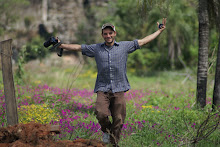

It is the early 15th century. The august figure of Prince Henry the Navigator of Portugal stands silently on the shores of the Algarve Coast. With scores of cartographers at his employ and shipwrights at his command, he is caught in the final moment of reflection which immediately precedes action. The cliffs fall away to the ocean beneath him. His gaze remains transfixed on the ships out to sea. Caravels –ships of his own design— bob rhythmically in line awaiting their instructions. Shallow keeled and equipped with lateen sails, these newly constructed vessels possess the ability to sail into the wind.
Over the next century, these ships will venture far down the African coast and eventually out across the Atlantic. With expectations high, Prince Henry raises his hand and grants permission to set sail on the journeys that will redefine the world.
The sextant, celestial navigation, even the ability to fix longitude and without question a system of global positioning all will come later, much later. Equipped with only an intrepid spirit of exploration and the art of dead reckoning, these Portuguese explorers must place their trust in a compass –an instrument crafted centuries before by the Chinese— to find their way there and back.
Fast forward five hundred years and modern urban explorers tend to whip out a smart phone and effortlessly lock in their GPS coordinates. A simple “Get Directions” click and they are on their way, weaving through cross town traffic, down the shoots of the NY C subway system and springing up once more in parts unknown.
Transporting themselves to and fro from one side of the metropolis to the other, most New York City inhabitants no longer give much thought to the hows of their navigational prowess. Instead, when the delightful British accented voice speaks up with timely advice to turn right, these stylish denizens of urban living follow suit without question or concern.
Much akin to the University’s storied past however; New School Recreation travels countercurrent.
On Sunday afternoon, with cell phones silenced and ‘smartness’ returned to the naturally endowed variety an unassuming band of students traveled to Muttontown, Long Island to test their navigational skills. A straight shot out the Long Island Expressway, Muttontown, the name itself a holdover from the colonial era of exploration, was site to the Long Island Orienteering Club’s Orienteering Meet.
Under a canopy of sun struck yellow leaves dappled with flares of red and strokes of orange, the New School students learn to orient a map and read a compass. Working in teams of two, each student is tasked with finding a series of orienteering controls --kite like objects hidden in the wood—in the shortest time possible. Whether by trail or rough shod through the wilderness terrain, the mission is to seek out and find, to search and discover. Lost. Hidden. A Needle in a hay stack. These are relative terms. Compass in hand, map at the ready, quick wits about them: this first group of New School Orienteerers have become the newest reincarnates of the millennia old tradition of exploration.
Prince Henry the Navigator watches intently until the ships disappear over the horizon line. His expression softens and he permits a smile. There is hope on the horizon.
For us however, as the magnetic pull of the Earth spins the compass needle gently northward and life’s journeys begin to intertwine with its destinations, in which direction does your compass point?
